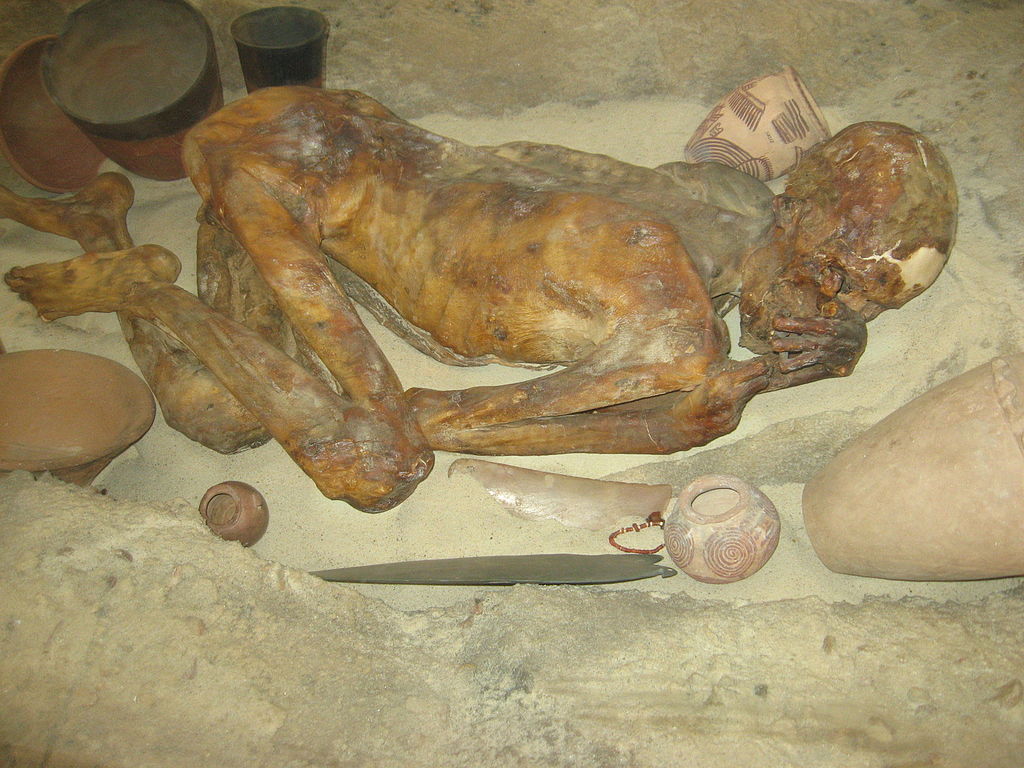
One of the oldest pieces in the museum is not stone or porcelain or metal, but an actual human being – someone who walked around and felt the sun on their back nearly 5,500 years ago.
Looking at the desiccated corpse we can see how wonderfully he is preserved; the skin is like leather, you can see his fingernails, and can even make out the colour of his hair. He’s known as Gebelein man, from the place in Egypt where he was found, but because of his red hair he was nicknamed ‘ginger’.
We think he was around 18-20 when he died, and when the museum did a ‘virtual autopsy’ on him in 2012 by putting him through a CT scan, (there’s a video of this in the museum, and an interactive display of the results) the evidence points to him having been murdered. There’s a stab wound in his shoulders where a long, thin blade came down and punctured his lungs.
His fine state of preservation wasn’t because he was deliberately mummified, but the hot sand he was buried in dried out his body, preserving it. And we believe that it was discovering intact bodies like this that made the ancient Egyptians work on the process of mummification. They felt that the bodies had to be preserved so that they would be available to the spirits in the afterlife – if the spirit (known as the Ka) couldn’t recognise the body that they had left, they wouldn’t be able to repossess it.
Their first attempts weren’t particularly successful, bodies were buried in the ground in small coffins to protect them from animals, but they decayed. But over the succeeding centuries, starting in about 2500BC, (so around 1,000 years after Gebelein Man) they evolved a process that resulted in the mummies that you can find in the museum.
First the body was washed and purified, and the organs were removed and packed in a substance called natron – a salt – to dry them out. The dried organs were then placed in vessels called canopic jars. The heart was left in the body as that was thought to be the centre of intelligence and feeling. The brain, on the other hand, was thought to be of no use (they thought all it did was produce snot), so that was hooked out of the head through the nose and thrown away.
The whole body was then packed and covered with natron which absorbed all the moisture out of it. After 40 days the body was washed again, and stuffed with linen or sawdust to preserve its shape. The body was covered in oil to help the skin stay elastic.
Then we get what we all associate with mummies – it was wrapped in hundreds of metres of linen ‘bandages’, then put into a wooden case, then into a sarcophagus which was generally painted or decorated with a likeness of the occupant.
As you can imagine, this was an expensive process and only high-status individuals had their bodies preserved in this way, perhaps 1-2% of the population. Even so, the museum has over 100 mummies – most in storage – but you can see those that are on display in rooms 62 and 63.

